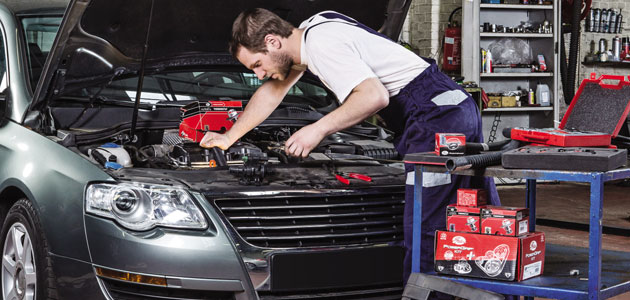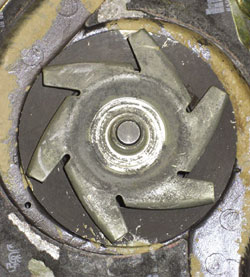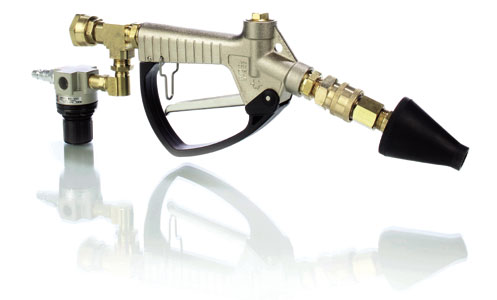The coolant runs clear, but don’t be fooled! It could contain contaminants that are not always easy to spot or remove. On installation, the water pump depends on the coolant to lubricate the seal which, in turn, ensures the system remains water-tight. Contaminants compromise the seal, which results in a leak that could cause catastrophic engine damage. And it won’t take long.

Contamination concerns
In addition to protecting the engine from extreme temperatures, the coolant protects the cooling system from rust and corrosion. Over time, the additives in the coolant become depleted and its protective properties become less effective. If the coolant becomes contaminated with traces of oil, dirt or other harmful particles, the potential for component failure inside the system increases.
Cooling systems become increasingly difficult to flush completely if the accumulation of debris is severe. Allowing the coolant to run out under gravity is asking for trouble. Flushing the system with a traditional hosepipe is common practice but there are residual problems.
A professional flushing tool combines water and air pressure and directs them through the cooling system under careful control in a way that will not damage any of the other components. Accumulated sludge and scale deposits are removed without the use of harsh chemicals or solvents. It cleans out radiators, heat exchangers, hoses and also engine blocks.
As engine design has advanced and more aluminium components have been added to the cooling system, the need for internal system cleanliness has increased. Gates introduced its Power Clean Flush Tool late last year in a bid to ensure more first time fit success.

Damage from deposit build-up inside the radiator
Seeing the signs
Gates argues that for a cooling system expert, a premature water pump failure that’s been caused by contamination is relatively easy to spot. The problem is that by then, of course, a significant amount of administrative time has already been lost and costs incurred. This may include customer breakdown and inconvenience, rectification work by the garage as well as administration at motor factor level. Ill feelings may have been generated, reputations tarnished.
Reliability and credibility are essential qualities that garages cannot afford to lose.
Flushing the system efficiently makes sense and while some mechanics might take a negative view and deem a specialist tool to be unnecessary, it’s clear that a professional flushing tool is an essential preventive maintenance tool.
Gates points out that, at the very least, the additional cost is small beer by comparison with the rectification time saved. At the other end of the scale, the cost of not using one involves a serious risk of engine damage that could adversely influence profitability and cost the garage dearly in more ways than one.

The Gates Power Clean Flush Tool can ensure more first time fit success
THE GARAGE VIEW – BROAD STREET MOTORS, SOUTH WALES
John Rees runs Broad Street Motors, an independent garage in Abersychan. His mechanics have all used the Gates Power Clean Flush.
 “Anytime we do a water pump we always flush the system out. We’d always done it manually, using a hose and a standard cleaning agent. It is time-consuming and frankly a bit of a bore, to tell you the truth,” he says.
“Anytime we do a water pump we always flush the system out. We’d always done it manually, using a hose and a standard cleaning agent. It is time-consuming and frankly a bit of a bore, to tell you the truth,” he says.
“We’ve used the Gates tool on a few vehicles, including a VW Transporter and a Fiesta 1.4. We’d have to say it was faster, more efficient and felt much more professional. If you were using it in conjunction with a head gasket, water pump failure or coolant contamination job, it would definitely save you a lot of time.”
He says the tool was simple to use and adds that they were up and running after watching a short 5-minute online video. He thinks a tool like this is likely to make a quick return on investment for users.
Find more tips and hints in the ‘Gates Techzone’









